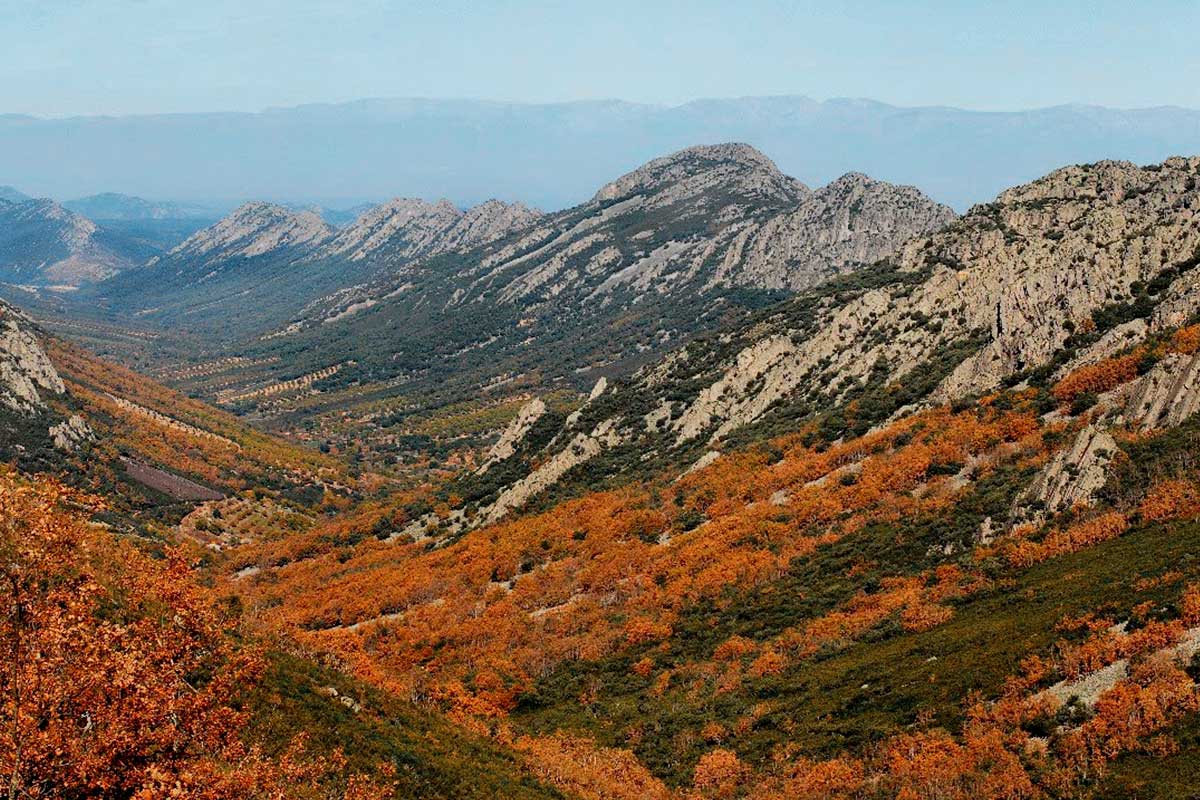LOCATION AND ACCESS
This syncline runs through the Geopark from the crag of La Villuerca to Campillo de Deleitosa. In its southeast section it is crossed by the River Viejas and in the northwest by the Torneros stream. To visit it along the Torneros we can take the road that joins Robledollano and Castañar de Ibor; it is halfway between both towns between the Risco de la Reyerta and the Cancho de las Narices. There is a good view from the south from the hillock of the Pozo de la Nieve (Snow Well) on the ascent to the crag of La Villuerca.
ATTRACTIONS OF THE VISIT
The Viejas-Torneros syncline has some beautiful landscapes, although venturing here is an adventure for the walker or touring cyclist as there are no roads suitable for cars. As we leave the Cancho de las Narices we will find a country road called the Camino del Valle del Viejas that runs parallel to the river towards its source to allow us to discover a landscape where the geology and the woodland below the crags and hillocks surprise us at every turn.
The area is also known for its fossils of the Ordovician such as those previously mentioned, which are typical of the continental platforms of the seas of the early Palaeozoic. Remember that fossils represent part of the geological heritage of the Geopark and that their collection is forbidden. If we come across one we can capture a fine image, but we must leave it where it is for other visitors to enjoy.
During the visit we can observe elements of botanical interest such as the riverside woodland of the River Viejas (Portuguese laurel, alder, and ash) and animals such as the otters of the River Viejas or the birds (griffon vulture, Egyptian vulture, black stork, etc.) on the crags of the nearby sierras.
GEOLOGICAL INTERPRETATION

